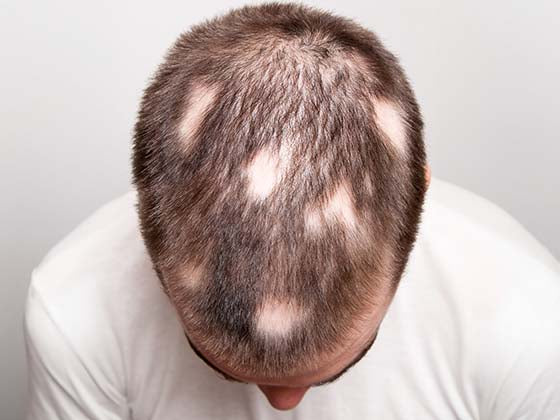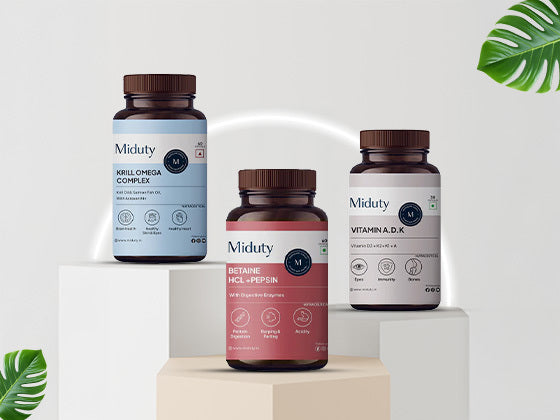Topical Steroid Damage (TSD) refers to the adverse effects and skin deterioration that occur from the prolonged or inappropriate use of topical corticosteroids. These medications, often prescribed for conditions like eczema, psoriasis, and dermatitis, are designed to reduce inflammation and suppress the immune response in the skin. However, when used excessively or without proper medical guidance, they can lead to significant skin damage. Symptoms of TSD include thinning of the skin, increased susceptibility to infections, persistent redness, burning sensations, and the development of conditions like Topical Steroid Withdrawal (TSW). The skin can become highly sensitive, reactive, and may show signs of premature ageing. Understanding TSD is crucial for recognizing the importance of following medical advice strictly and using topical steroids judiciously to avoid long-term skin health issues.
Understanding Topical Steroid Damage and Its Effects on Skin

Topical Steroid Damage (TSD) occurs when corticosteroids, prescribed to treat inflammatory skin conditions such as eczema, psoriasis, and dermatitis, are used improperly or for extended periods. These steroids work by reducing inflammation and suppressing the immune response in the skin. However, prolonged or inappropriate use can lead to significant adverse effects.
-
The primary effects of TSD include thinning of the skin (atrophy), which makes it more fragile and susceptible to injury. The skin can also become more prone to infections due to a compromised barrier function. Persistent redness, known as erythema, and burning sensations are common, causing significant discomfort. Additionally, the skin may develop visible blood vessels (telangiectasia), stretch marks (striae), and increased hair growth in the affected areas.
-
Another severe consequence of TSD is Topical Steroid Withdrawal (TSW), which can occur when long-term steroid use is abruptly stopped. TSW is characterized by intense redness, burning, itching, and peeling of the skin, making it highly reactive and sensitive.
Understanding TSD is essential for both patients and healthcare providers to ensure that topical steroids are used appropriately and under strict medical supervision. This knowledge helps prevent the long-term adverse effects associated with improper steroid use and highlights the importance of exploring alternative treatments and supportive skincare practices for managing chronic skin conditions.
The Science Behind Topical Steroid Damage: How Steroids Affect Skin Health

The science behind topical steroid damage reveals that prolonged use of corticosteroids can lead to skin thinning (atrophy) and the development of telangiectasia. Skin thinning occurs because steroids inhibit collagen synthesis, reducing the skin's structural integrity and making it more fragile and susceptible to tears and bruising. Telangiectasia, characterised by visible dilated blood vessels, results from the weakening of blood vessel walls due to the steroid’s anti-inflammatory effects. This weakening makes vessels more prone to dilation and visible under the skin, contributing to an uneven skin appearance and increased sensitivity. These effects underscore the importance of using topical steroids judiciously and under medical supervision to prevent long-term damage.
Identifying Topical Steroid Damage: Signs and Symptoms to Watch For

Topical steroid damage, also known as topical steroid withdrawal (TSW) or steroid-induced dermatitis and steroid-induced skin conditions, can occur after prolonged use of topical corticosteroids. It’s important to recognize the signs and symptoms of this condition to seek appropriate medical advice and treatment. Here are the key signs and symptoms to watch for:
-
One of the earliest signs is persistent redness and a burning sensation on the skin, even after discontinuing the steroid use.
-
Prolonged use of topical steroids can cause the skin to become thin, fragile, and more susceptible to bruising and tears.
-
Development of acneiform eruptions or pimples, especially around the mouth, chin, and cheeks.
-
Persistent redness, visible blood vessels, and sometimes pimples and pustules resembling rosacea.
-
Intense itching and swelling in the affected areas, which may be accompanied by a stinging or painful sensation.
-
Skin may become extremely dry, scaly, rough and peel excessively.
-
Discoloration of the skin, resulting in either darker (hyperpigmentation) or lighter (hypopigmentation) patches.
-
Unusual hair growth in the treated areas, known as hypertrichosis.
-
Development of small, widened blood vessels on the skin’s surface.
-
Worsening of the original skin condition upon discontinuation of the steroid, often more severe than before, also referred to as Rebound Flare Up.
Managing and Preventing Topical Steroid Damage
Ceratins tips and tricks that can aid in managing and preventing topical steroid damage are:
-
Gradual Reduction: Taper off the use of topical steroids gradually rather than stopping abruptly to minimise withdrawal symptoms.
-
Alternative Treatments: Consult a healthcare provider for alternative treatments such as non-steroidal topical medications, moisturisers, and other therapies.
-
Proper Use: Follow the prescribed duration and dosage instructions strictly to avoid overuse.
-
Moisturization: Keep the skin well-moisturised to help restore its natural barrier function.
-
Seek Medical Advice: Regularly consult with a dermatologist or healthcare provider to monitor the condition and adjust the treatment plan as necessary.
Recognizing these signs and symptoms early can help mitigate the damage and guide you toward effective management strategies. If you suspect topical steroid damage, consult a healthcare professional for proper diagnosis and treatment.
Nourishing Your Skin Back to Health: Essential Care Tips

Nourishing your skin back to health after experiencing damage, such as from Topical Steroid Withdrawal (TSW) or other severe skin conditions, requires a thoughtful and consistent approach. The skin's natural barrier may be compromised, leading to increased sensitivity and vulnerability. Essential care tips focus on restoring this barrier, providing hydration, and using gentle, supportive products. By understanding the fundamental needs of damaged skin and adopting a holistic care routine, you can promote healing, reduce discomfort, and gradually restore your skin's vitality. This journey involves selecting the right skincare products, implementing healthy lifestyle habits, and seeking professional guidance to ensure your skin recovers effectively and sustainably. Continue reading to know more in detail.
Gentle Cleansing: Removing Impurities Without Irritation

Gentle cleansing is essential for individuals dealing with topical steroid damage (TSDF) to avoid further irritation and promote healing. Here are some guidelines and tips for removing impurities without causing irritation:
-
Choose cleansers that are free from harsh chemicals, fragrances, and alcohol. Look for products labelled as hypoallergenic, gentle, mild or suitable for sensitive skin. Cetaphil Gentle Skin Cleanser (Dry to Normal, Sensitive Skin) is highly recommended.
-
Wash your skin with lukewarm water instead of hot water, which can strip the skin of its natural oils and exacerbate dryness and irritation.
-
Limit washing to twice a day (morning and night) and after sweating. Over-cleansing can disrupt the skin’s natural barrier and lead to further irritation.
-
After washing, gently pat your skin dry with a soft, clean towel. Avoid rubbing, which can aggravate sensitive skin.
-
If you use a washcloth, make sure it’s soft and clean. Alternatively, using your hands can be even gentler on the skin.
-
Apply a gentle, hydrating moisturiser like Oryza Skin Moisturiser immediately after cleansing while your skin is still damp. This helps to lock in moisture and repair the skin barrier.
-
Steer clear of physical and chemical exfoliants, which can be too harsh for damaged skin.
-
Opt for cleansers with a balanced pH (close to the skin’s natural pH of around 5.5) to avoid disrupting the skin’s acid mantle.
Various recommended ingredients to look out in Gentle Cleansers are:
-
Glycerin: Helps attract and retain moisture in the skin.
Corniclean Mild & Gentle Cleanser For Sensitive Skin is a great recommendation.
-
Ceramides: Restore the skin barrier and retain moisture.
CeraVe Hydrating Cleanser for Normal to Dry Skin is enriched with ceramides and hyaluronic acid and maintains skin barrier.
-
Aloe Vera: Soothes and hydrates the skin.
The Face Shop Jeju Aloe Fresh Soothing Foam Cleanser is very gentle yet effective.
-
Oat Extract: Calms irritated skin and provides moisture.
FCL Oatsilk Soap Free Body Wash deeply cleanses and moisturizes.
-
Hyaluronic Acid: Deeply hydrates without causing irritation.
Clinikally Foaming Face Wash keeps the skin hydrated and radiant.
A Sample Skincare Routine for TSD
We, at Clinikally, present a sample routine that can aid while you are suffering from TSDF
-
Morning
-
Use a mild, fragrance-free cleanser like Bioderma Atoderm Intensive Gel Moussant with lukewarm water.
-
Gently pat skin dry.
-
Apply a hydrating, fragrance-free moisturiser like CeraVe Moisturising Lotion for Dry Skin to Very Dry Skin.
-
Use a broad spectrum sunscreen like Episoft AC Moisturiser with Sunscreen SPF 30.
-
Evening
-
Repeat the gentle cleansing with the same mild cleanser.
-
Pat skin and dry softly.
-
Apply a richer moisturiser like Cetaphil Moisturising Cream (Dry to Normal, Sensitive Skin) or a gentle hydrating serum like EVE LOM Intense Hydration Face Serum followed by another moisturiser like Maxrich E Paraffin Blend Emollient Cream to lock in hydration.
-
Post-Exercise
-
If needed, gently cleanse with lukewarm water and a mild cleanser.
-
Moisturise immediately afterward.
-
Additional Tips
-
Avoid Makeup: When possible, minimise the use of makeup, especially products that can clog pores or irritate the skin. If makeup is necessary, choose products designed for sensitive skin.
-
Patch Test: Before introducing new products, perform a patch test to ensure they do not cause adverse reactions.
-
Consult a Dermatologist: Regularly check in with a dermatologist to monitor skin health and adjust your skincare routine as needed.
-
Diet: Take a diet rich in proteins to support barrier repair. Protein powder like Beautywise Plant Protein Powder can also be incorporated to amplify the skin barrier repair.
Following these guidelines can help manage and soothe TSDF-affected skin, promoting a healthier and more comfortable skin barrier.
Moisture Replenishment: Restoring Hydration and Elasticity

Restoring hydration and elasticity in skin affected by topical steroid damage (TSDF) requires a careful and consistent approach. The focus should be on using products and methods that support the skin’s barrier function, retain moisture, and promote healing. Here’s an elaborate guide on moisture replenishment for TSDF.
Key Strategies for Moisture Replenishment
Certain important tips and tricks that can be utilised to gain a healthy skin are:
A. Look for Hydrating Ingredients in your skincare products.
-
Hyaluronic Acid: A powerful humectant that can hold up to 1000 times its weight in water, providing deep hydration.
-
Glycerin: Attracts moisture to the skin and helps maintain the skin's water balance.
-
Ceramides: Essential for restoring the skin barrier and retaining moisture.
-
Urea: Helps with hydration and has keratolytic properties that can smooth rough skin.
-
Aloe Vera: Soothes and hydrates the skin, reducing inflammation.
-
Squalane: A lightweight, non-comedogenic oil that mimics the skin’s natural sebum.
B. Choose moisturisers carefully.
-
Ointments and Creams: Prefer ointments and creams over lotions as they provide a thicker barrier to lock in moisture. Look for those containing the hydrating ingredients mentioned above.
-
Barrier Repair Creams: Specifically formulated to repair the skin barrier, these creams often contain ceramides, fatty acids, and cholesterol. Novology Skin Barrier Protect Serum and Brinton Atomist Skin Barrier Repair Cream are great recommendations.
C. Be careful while layering products
-
Hydrating Serums: Apply a hydrating serum containing hyaluronic acid or glycerin after cleansing and before moisturising.
-
Moisturising Cream: Follow the serum with a rich, nourishing cream to lock in hydration.
-
Occlusive Layer: In severe cases, an occlusive layer such as petroleum jelly can be applied as the final step to seal in moisture.
D. Additional Hydration Tips that can be incorporated into your routine are:
-
Use a humidifier in your living space, especially during dry months, to maintain ambient humidity and prevent moisture loss from your skin.
-
Drink plenty of water throughout the day to keep your body and skin hydrated from the inside out.
-
Steer clear of products with alcohol, fragrance, and harsh chemicals that can strip the skin of its natural oils.
-
If the skin can tolerate it, use gentle exfoliation methods (such as a soft washcloth or a mild exfoliating product) to remove dead skin cells and enhance the absorption of moisturising products. This should be done sparingly and with caution.
-
Incorporate foods rich in omega-3 fatty acids (such as fish, flaxseeds, and walnuts) and antioxidants (such as fruits and vegetables) to support skin health. Consider supplements like fish oil or evening primrose oil after consulting with a healthcare provider.
-
Regular check-ins with a dermatologist are crucial to tailor the skincare routine to your specific needs, monitor progress, and make adjustments as necessary. They can also recommend prescription treatments or advanced therapies like barrier repair treatments or low-dose oral medications to manage inflammation and promote healing.
By following these strategies, you can effectively restore hydration and elasticity to skin affected by TSDF, promoting a healthier, more resilient skin barrier.
Barrier Repair: Strengthening Your Skin's Natural Defences

Barrier repair refers to the process of restoring and strengthening the skin's natural defences, particularly its outermost layer, known as the stratum corneum. This layer serves as a barrier to protect the skin from environmental stressors, pathogens, and moisture loss. In the context of TSDF (Toxic Substances Disposal Facility), maintaining a robust skin barrier is especially important due to potential exposure to harmful substances. Here are some key aspects and strategies for barrier repair:
1. Understanding the Skin Barrier
-
Function: The skin barrier prevents water loss and protects against external irritants, allergens, and pathogens.
-
Components: It consists of corneocytes (dead skin cells) and intercellular lipids, primarily ceramides, cholesterol, and fatty acids.
2. Common Causes of Barrier Damage
-
Environmental Factors: Extreme temperatures, low humidity, and pollution.
-
Chemical Exposure: Harsh detergents, solvents, and irritants, which are common in TSDF environments.
-
Physical Factors: Over-washing, exfoliation, and mechanical abrasion.
-
Medical Conditions: Eczema, psoriasis, and other dermatological issues.
3. Symptoms of a Compromised Skin Barrier
-
Dryness and Dehydration: Flaky, rough, or scaly skin.
-
Irritation and Inflammation: Redness, itching, and sensitivity.
-
Increased Sensitivity: Reactivity to skincare products and environmental factors.
-
Infections: Higher susceptibility to infections due to a weakened barrier.
4. Strategies for Barrier Repair
-
Use Gentle Cleansers: Opt for mild, sulfate-free cleansers that do not strip the skin of its natural oils.
-
Moisturize Regularly: Use moisturizers containing ceramides, fatty acids, and cholesterol to replenish the skin’s lipid barrier.
-
Avoid Harsh Chemicals: Minimize exposure to harsh solvents and detergents; wear protective gear when necessary.
-
Maintain Humidity: Use humidifiers in dry environments to maintain adequate moisture levels in the skin.
-
Diet and Hydration: Ensure adequate hydration and a balanced diet rich in essential fatty acids and antioxidants.
-
Barrier Repair Products: Look for products specifically formulated for barrier repair, containing ingredients like niacinamide, hyaluronic acid, and glycerin.
5. Special Considerations in TSDF
-
Protective Gear: Always wear appropriate protective clothing, gloves, and masks to minimize skin exposure to harmful substances.
-
Immediate Cleansing: After exposure, cleanse the skin thoroughly but gently to remove any contaminants.
-
Regular Skin Checks: Monitor the skin regularly for signs of damage or irritation, and address issues promptly.
By understanding and implementing these strategies, individuals working in TSDF environments can effectively strengthen their skin's natural defences and maintain overall skin health.
Patience and Persistence: Overcoming Challenges in Skin Recovery

Patience and persistence are crucial in overcoming challenges in skin recovery after steroids abuse, like after experiencing conditions like TSW or TSDF. The healing process can be slow and fraught with setbacks, requiring a long-term commitment to consistent care and treatment. By maintaining a positive outlook and adhering to a prescribed skincare regimen, individuals can gradually restore their skin's health and resilience. Persistence in following professional advice and making necessary lifestyle adjustments ensures sustained progress, while patience helps manage expectations and reduces frustration. Together, these qualities empower individuals to navigate the journey to skin recovery with determination and hope.
Managing Discomfort: Soothing Itching and Irritation

Managing discomfort, especially itching and irritation, is crucial for individuals working in a Toxic Substances Disposal Facility (TSDF) due to potential exposure to harmful chemicals and irritants. Here are some strategies to soothe and manage these symptoms effectively:
1. Identifying the Cause
-
Chemical Exposure: Identifying the specific chemicals or substances causing irritation is the first step in management.
-
Protective Measures: Always use appropriate protective gear to minimize direct skin contact with irritants.
2. Immediate Steps to Soothe Itching and Irritation
-
Rinse Thoroughly: If you suspect exposure, rinse the affected area with plenty of water to remove any residues.
-
Gentle Cleansing: Use a mild, fragrance-free cleanser to wash the skin gently, avoiding harsh scrubbing.
-
Cold Compress: Apply a cold compress to the affected area to reduce inflammation and soothe itching.
3. Topical Treatments
-
Hydrocortisone Cream: Over-the-counter hydrocortisone cream can reduce inflammation and itching.
-
Calamine Lotion: This can provide a cooling effect and relieve mild itching. Calmyk Lotion is highly recommended.
-
Moisturizers: Use fragrance-free and hypoallergenic moisturizers to restore skin barrier function and reduce dryness.
4. Avoiding Further Irritation
-
Loose Clothing: Wear loose, breathable clothing to avoid friction and allow the skin to breathe.
-
Avoid Scratching: Scratching can worsen irritation and lead to infection. Keep nails trimmed and consider wearing gloves at night if itching is severe.
5. Long-term Management
-
Barrier Repair: Use products containing ceramides, fatty acids, and cholesterol to strengthen the skin barrier.
-
Oatmeal Baths: Colloidal oatmeal baths can soothe and moisturize irritated skin.
-
Regular Moisturizing: Maintain a regular moisturizing routine to keep the skin hydrated and resilient.
6. Medical Treatments
-
Antihistamines: Oral antihistamines can help reduce itching, especially if it is due to an allergic reaction.
-
Prescription Medications: For severe or persistent symptoms, consult a healthcare provider for stronger topical or oral medications.
7. Environmental and Lifestyle Adjustments
-
Humidity Control: Use humidifiers to maintain optimal moisture levels in the air, especially in dry environments.
-
Hydration: Drink plenty of water to keep the skin hydrated from within.
-
Diet: Ensure a diet rich in essential fatty acids, vitamins, and antioxidants to support overall skin health.
8. Regular Monitoring and Professional Advice
-
Skin Checks: Regularly inspect your skin for signs of irritation, redness, or other changes.
-
Consult Professionals: Seek advice from dermatologists or healthcare providers for persistent or severe symptoms.
By implementing these strategies, individuals working in TSDF environments can effectively manage itching and irritation, ensuring better skin health and overall comfort.
Emotional Support: Coping with the Psychological Impact

Coping with the psychological impact of a Topical Steroid Damaged Face (TSDF) can be a challenging and emotional journey, often marked by feelings of distress, self-consciousness, and frustration. The visible changes in appearance can significantly affect self-esteem and social interactions, leading to isolation and anxiety. It is essential to acknowledge these emotions and seek comprehensive support. Engaging in therapy, particularly cognitive-behavioural therapy (CBT), can help individuals manage negative thoughts and develop healthier coping mechanisms. Support groups, either in-person or online, can provide a sense of community and understanding, where individuals can share experiences and advice. Practising self-care routines, such as gentle skincare regimens and stress-reducing activities like meditation and yoga, can help improve overall well-being. Building a strong support system of family and friends who offer empathy and encouragement is crucial. Additionally, consulting with dermatologists and mental health professionals who specialise in skin-related psychological issues can provide targeted treatment plans to address both the physical and emotional aspects of TSDF. By taking these steps, individuals can navigate the emotional challenges of TSDF more effectively, fostering resilience and a sense of hope.
Time and Consistency: Setting Realistic Expectations for Recovery

Recovery from Topical Steroid Damaged Face (TSDF) requires patience, time, and consistency, as healing damaged skin is often a gradual process with no overnight solutions. Setting realistic expectations is crucial to maintaining a positive outlook and avoiding discouragement. Understand that the skin's barrier needs time to repair itself and that visible improvements might take weeks or even months. Consistently following a gentle skincare routine, prescribed by a dermatologist, and avoiding triggers that may exacerbate the condition are essential steps. It’s important to track progress in small increments, celebrate minor improvements, and stay committed to the prescribed treatment plan. Being kind to oneself and acknowledging the emotional and physical journey involved can foster resilience and a more sustainable recovery process.
Rebuilding Skin Resilience: Long-Term Strategies for Healthy Skin

Rebuilding skin resilience, particularly after damage like TSDF, involves adopting long-term strategies that focus on restoring and maintaining the skin's health.
-
First and foremost, establishing a consistent skincare routine with products that are gentle and free from harsh chemicals is crucial. Incorporating moisturisers rich in ceramides, fatty acids, and cholesterol can help rebuild the skin barrier. Regular use of sunscreen protects against further damage from UV radiation, which can hinder the healing process.
-
Additionally, maintaining a balanced diet rich in antioxidants, vitamins (especially A, C, and E), and omega-3 fatty acids supports skin health from within.
-
Staying hydrated by drinking plenty of water is equally important.
-
It's also beneficial to incorporate lifestyle changes such as reducing stress through mindfulness practices, regular exercise, and adequate sleep, as stress can exacerbate skin issues.
-
Avoiding smoking and limiting alcohol intake are important, as these habits can impede skin repair and exacerbate damage.
-
Regular consultations with a dermatologist can help monitor progress and make necessary adjustments to the skincare regimen.
Over time, these consistent and holistic approaches can significantly enhance skin resilience, leading to healthier, more robust skin.
Sun Protection: Shielding Your Skin from UV Damage

Sun protection is essential for shielding your skin from UV damage, particularly during TSDF and after the recovery as well.
-
During TSDF
-
Wear Protective Gear: Use long-sleeved, UV-protective clothing, wide-brimmed hats, and UV-blocking sunglasses to cover exposed skin.
-
Apply Sunscreen: Use a broad-spectrum sunscreen with at least SPF 30 on all exposed areas of skin. Reapply every two hours, or more frequently if sweating or exposed to water.
-
Work in Shade: Whenever possible, perform tasks in shaded areas, especially during peak sun hours (10 a.m. to 4 p.m.).
-
Use Physical Barriers: Utilise umbrellas, tents, or other shade-providing equipment to reduce direct UV exposure during outdoor activities.
-
After TSDF
-
Continued Sunscreen Use: Maintain the habit of applying broad-spectrum sunscreen daily, even when not working.
-
Skin Care Routine: Incorporate antioxidant-rich skincare products to help repair and protect skin from oxidative stress caused by UV exposure.
-
Moisturise: Use moisturisers with ingredients like ceramides and hyaluronic acid to repair and strengthen the skin barrier.
-
Hydrate: Drink plenty of water to keep your skin hydrated from within.
-
General Sun Protection Tips
-
Avoid Tanning Beds: Refrain from using tanning beds or sunlamps, as they can cause significant UV damage.
-
Regular Skin Checks: Perform self-examinations to monitor for new or changing moles and spots, and seek medical advice if any changes are detected.
-
Dermatologist Visits: Schedule annual check-ups with a dermatologist for professional skin evaluations and personalised advice on sun protection.
By integrating these strategies, individuals can effectively shield their skin from UV damage both during and after working in a TSDF environment, promoting long-term skin health and resilience.
Healthy Lifestyle Habits: Supporting Skin Health from Within

Maintaining healthy lifestyle habits is crucial for supporting skin health, especially when working in a TSDF environment. A balanced diet rich in vitamins A, C, E, and omega-3 fatty acids enhances skin resilience. Staying hydrated and getting regular exercise improves circulation and detoxification. Adequate sleep aids in skin cell repair, while stress management through mindfulness practices prevents stress-related skin issues. These habits collectively promote healthier, more resilient skin, even in challenging conditions.
Professional Guidance: Consulting Dermatologists for Tailored Care

Consulting dermatologists for tailored care is essential for effectively managing and maintaining skin health, particularly when dealing with complex conditions like those resulting from exposure to harsh environments such as TSDF. Dermatologists provide professional guidance based on individual skin types, specific concerns, and medical history, ensuring that treatment plans are customised to meet unique needs. They can accurately diagnose skin issues, recommend appropriate treatments, and monitor progress, adjusting care plans as necessary. Access to professional advice helps prevent the misuse of over-the-counter products, which can sometimes worsen skin conditions. Regular check-ups with a dermatologist also facilitate early detection and management of potential skin problems, reducing the risk of severe complications. By leveraging their expertise, individuals can achieve more effective and sustainable skin care outcomes.
Conclusion: The Journey to Healing and Restoring Your Skin

The journey to healing and restoring your skin, particularly after challenges like TSDF, requires patience, consistency, and professional guidance. By adopting protective measures, maintaining healthy lifestyle habits, and consulting with dermatologists for personalised care, you can effectively rebuild skin resilience and achieve lasting health. Embrace this holistic approach to nurture and protect your skin, ensuring it remains strong and vibrant in the face of ongoing environmental challenges.









































